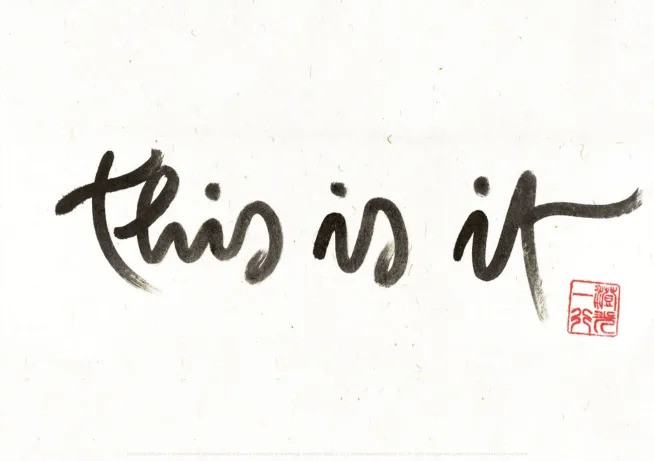By Janet Tse
Janet Tse has 25 years of teaching experience and over 30 years participation in environmental protection, along with practicing and coaching mindfulness meditation. Her qualifications include a Master of Buddhist Studies (MBS, HKU), Master of Business Administration (MBA, HKBU), Certificate in MEDPAC Drug Abuse Quitline (HKU), Mental Health First Aid (MHFA) International / Hong Kong, and Nature Dao Elementary Tutor Training.
The feeling of stress encompasses emotional and physical tension, frustration, anger, or nervousness. It arises as a response to challenges or demands placed on the body. While stress can have positive effects in short bursts, such as aiding in avoiding danger or meeting deadlines, prolonged stress can negatively impact one’s health. However, the practice of calligraphy, particularly Buddhist calligraphy, has the potential to serve as a beneficial method for reducing anxiety and depression. Buddhist calligraphy encourages inner peace, tranquility, and concentration, providing a means for individuals to cope, especially in the midst of the global pandemic that continues to affect humanity.
In the summer of 2023, a research study was conducted employing qualitative methods supported by quantitative data analysis and measurement. Ten focus group interviews were carried out face-to-face with a total of 75 Chinese calligraphers aged 18 years and above in Hong Kong. These interviews utilized a combination of open-ended and close-ended questions to allow both interviewers and interviewees to freely discuss and explore their personal experiences, as well as delve into their deeper feelings and emotions regarding the practice of Chinese brush calligraphy.
The focus was on the use of general Chinese vocabulary and/or inscriptions, as well as Buddhist sutras such as the Heart Sutra, Diamond Sutra, or other Buddhist words related to stress, concentration, calmness, happiness, sufferings, and the impact of the global pandemic in Hong Kong.
Among the interviewees, twenty-six (35 per cent) individuals who had experience in practicing Buddhist calligraphy strongly agreed that high concentration is the most crucial element in this form of calligraphy. Due to the similarity in sentence structure and words, particularly between the Heart and Diamond Sutras, it is easy to mistakenly write down the sutra words. Practicing Buddhist calligraphy requires precise, clear writing with humility and a devoted mind and behavior.
Twenty-three (30.67 per cent) interviewees agreed that there was no difference in mindfulness training between practicing calligraphy and practicing Buddhist calligraphy. Ten (13 per cent) Buddhist calligraphers expressed that practicing calligraphy, whether Chinese or Buddhist, brought them relaxation, reduced stress, and allowed them to remain calm, joyful, and focused on the present moment without judgment.
Eight (11 per cent) interviewees showed indifference towards practicing either Chinese or Buddhist calligraphy. Six (8 per cent) interviewees reported experiencing a similar sense of immersion as when practicing Buddhist calligraphy in temples. They described a natural merging of their bodies and minds into single-mindedness, not being aware of the passage of time, similar to the experience of Zen or meditation practice, aligning with Buddhist words, teachings, and Dharma during their calligraphy practice. Five (7 per cent) interviewees agreed that they would align their thoughts and intentions with the teachings of Buddhist sutras while practicing calligraphy with Buddhist sutras, allowing them to cultivate emotional stability and purify their minds.

Eighteen (24 per cent) interviewees were between the ages of 40 to 59, while fifty-one (68 per cent) were aged over 60. Twenty-eight (37 per cent) interviewees identified as Buddhists, while forty-seven (63 per cent) were non-Buddhists, including twenty (27 per cent) who were Christians. Forty-two (56 per cent) had attended formal Buddhist classes, and twenty-seven (36 per cent) had taken refuge in Buddhism.
However, beginners in calligraphy often experience stress due to concerns about the quality of their writing. After practicing for two years or more and letting go of comparisons with others, calligraphers can enter the stage of brush meditation, characterized by happiness, joy, and calm. Notably, an interview with a calligrapher who had only two years of experience revealed that the interviewee had a temperamental personality, learning to calm down, seeking tranquility, feeling comfortable, avoiding comparison with others’ calligraphy, and enjoying the writing process are some of the benefits derived from practicing calligraphy.
In the Buddhist tradition, mindfulness is simply resting in the natural clarity of the mind. Six (8 per cent) interviewees with more than ten years, and even up to thirty to sixty years, of calligraphy experience expressed indifference, without craving or attachment, towards Chinese calligraphy and Buddhist calligraphy. They embody the teachings of Buddhism on selflessness and dependent arising, recognizing that our happiness and well-being are interconnected with the past, present, and future generations, as well as with the natural environment and the rest of the ecosystem.
One interviewee expressed curiosity about how practicing calligraphy and Buddhist calligraphy could help alleviate suffering, such as the ideal number of hours per day and the preferred time schedule (morning, afternoon, or evening) to achieve therapeutic results. Additionally, another interviewee highlighted the use of calligraphy with Buddhist words during times of economic and business difficulties as a means to strengthen the mind, free from desires and emotional fluctuations. Some interviewees admitted to not understanding the meanings of Buddhist sutras, which hindered their readiness to practice calligraphy with such sutras.
In fact, some interviewees mentioned that they were not yet prepared to engage in Buddhist calligraphy due to their restless and distracted state of mind. A non-Buddhist interviewee emphasized the need for attentiveness, humility, respect, calmness, and an open mind when practicing Buddhist calligraphy with sutras. Another interviewee expressed a preference for practicing Daoist calligraphy instead of Buddhist sutras, as it aligns with the cultivation of mindfulness through the concepts of non-self, non-clinging, and non-craving.
In conclusion, the findings from the focus group interviews unveiled that practicing Buddhist calligraphy can effectively alleviate stress during the global pandemic.


